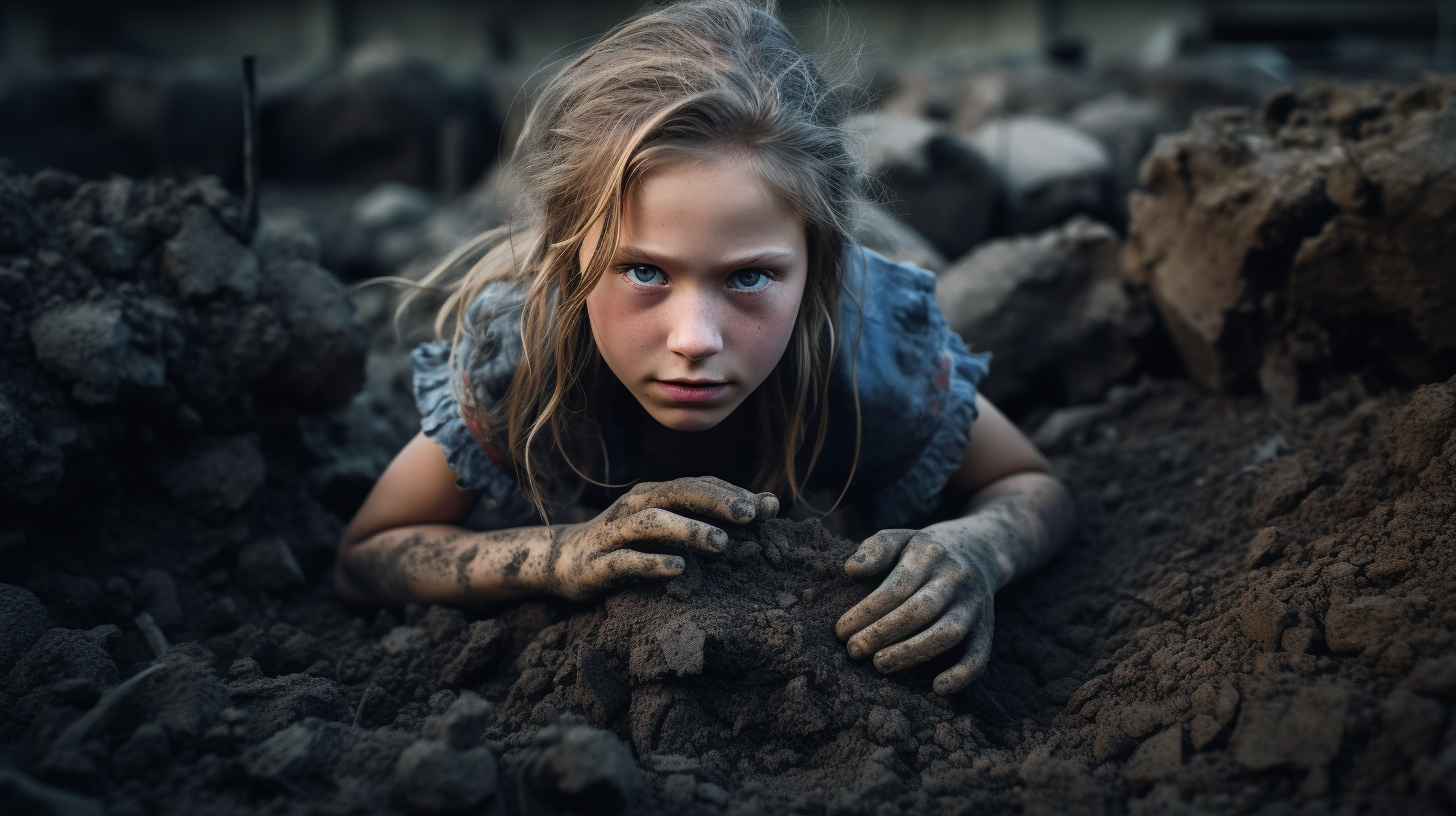In the shadow of a tenebrous sky, where once rich, fertile lands sprawled, there lies now but a grave of aridity, an expanse of desolation where the very soil has succumbed to petrification. The conversion from nourishing ground to unyielding stone presents a silent testimony to our environmental misadventures. Within this stark tableau, our narrative unfolds: the tale of Earth’s vitality ebbing away, leaving humanity entombed within its own encroaching dystopia. ‘When Soil Turns to Stone’, is not merely a title but a grim prognosis of our planet’s health, the Earth’s cry for a reprieve that we’ve tunefully ignored.
In this foreboding landscape, one may wonder, how did we arrive at such a pass? The process is both gradual and insidious. It begins with the loss of organic matter, that crucial ingredient for life-giving soil, leading to erosion and ultimately, compaction. This cascade to catastrophe is exacerbated by a methodical misuse of land through unsustainable agricultural practices and deforestation – all while the climate crisis vigorously wields its chaotic baton, orchestrating the collapse of the natural world.
The stories of the Earth’s terrain morphing into an inhospitable crust are no longer confined to allegorical musings; they are haunting realities, documented by scientists and observed by those unfortunate enough to live on the frontlines of this desecration. The soil’s transformation into a hardened carapace, impervious to water and life, curtails not just plant growth but the very foundation of our food chain. Dr. Aleksei Dryden, quoted previously in our discussions on climate dilemmas, articulately phrases this phenomenon as ‘the petrification of our sustenance stratum’—an occurrence as dire as it is disregarded.
Conveying the severity of this crisis requires examining the pillars that hold food security aloft and how, with each successive failure of these supports, our societal edifice inches closer toward collapse. Pollinators lay ravaged by habitat destruction, soil biodiversity plummets, and the Earth’s balancing act of water absorption and nutrient cycling falters. These unseen mechanisms that once silently ensured our survival are being audibly dismantled, piece by piece.
Reprieve from this march towards calcification may lie in the innovation of agricultural technologies and methods that promote regeneration and soil conservation. However, such undertakings oft resemble sand castles built against an advancing tide. They serve as a stoic reminder of human ingenuity but are frequently overpowered by the relentless surge of environmental degradation that washes away these temporary defenses.
The narrative of ‘When Soil Turns to Stone’ is a cautionary tale, resounding a clarion call to heed the creeping death knell for fertility. Yet in contrast with our modest attempts at resolution, the scale of global inertia is massive and the appetite for change is, sadly, insufficient. It is within this eerie landscape that our chronicling must persist, scribing what may be the final chapters of our ecological odyssey.
This plurithematic contemplation reveals more than soil’s sad transformation; it mirrors the solidification of humanity’s obstinacy, the crystallization of ignorance. In this reflection, we find not interludes of solace or redemption, but rather an ominous ecological parable, stark and unyielding as the land it laments. As dusk falls upon the day of fertile earth, our actions remain ossified in the annals of time, a chronicle of caution gone unheeded.
The elegy of the Earth’s desiccated veins will etch itself deep into the history of the human race, a testament of when soil turned to stone and hopes of a verdant future became dust. We must perforce continue to observe, document, and indeed, to tell the story of the stone, as it unfolds beneath our very feet. For even in the throes of dystopia, it is the saga that spurs the soul and compels the consciousness.
